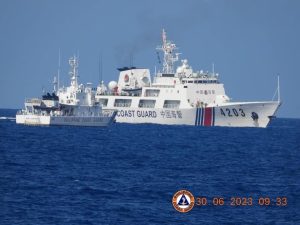In the second half of 2023, reports of incidents between Chinese and Philippines vessels in the South China Sea began piling up at an alarming rate. Chinese vessels used water cannons on and collided with Philippine ships seeking to resupply an outpost on Second Thomas Shoal, which is also claimed by China. Manila reported “swarming” of other disputed reefs by Chinese fishing vessels and maritime militia. The Philippine government has made clear that it expects these clashes to continue and even escalate in 2024.
The Diplomat’s editor in chief, Shannon Tiezzi, interviewed South China Sea expert Gregory Poling on the China-Philippines disputes, the strategy of Philippine President Ferdinand Marcos Jr., and the role of the Philippines-U.S. alliance.
Poling, the director of the Southeast Asia Program and Asia Maritime Transparency Initiative at the Center for Strategic and International Studies (CSIS), noted that these tensions have been simmering for over a decade. “The deepening U.S.-Philippine alliance is a symptom of China’s behavior in the South China Sea, not its cause,” Poling said.
In October, November, and December there were a spate of reported run-ins between Chinese and Philippines vessels near disputed maritime features in the South China Sea, including several collisions. Is the frequency of such encounters new, or just “new to us” in the sense that the Philippines didn’t previously publicize these incidents?
A little of both. The frequency and intensity of these run-ins has definitely increased, and began doing so from spring 2022. But China has maintained a daily coast guard patrol around Second Thomas Shoal – the site of these incidents – since late 2013 and has regularly deployed maritime militia boats around it since at least 2018. China has also blocked or harassed Philippine resupply missions to the troops stationed at Second Thomas Shoal on many occasions under both the previous Aquino and Duterte administrations. But during the latter, Manila did its best to sweep those under the rug.
































